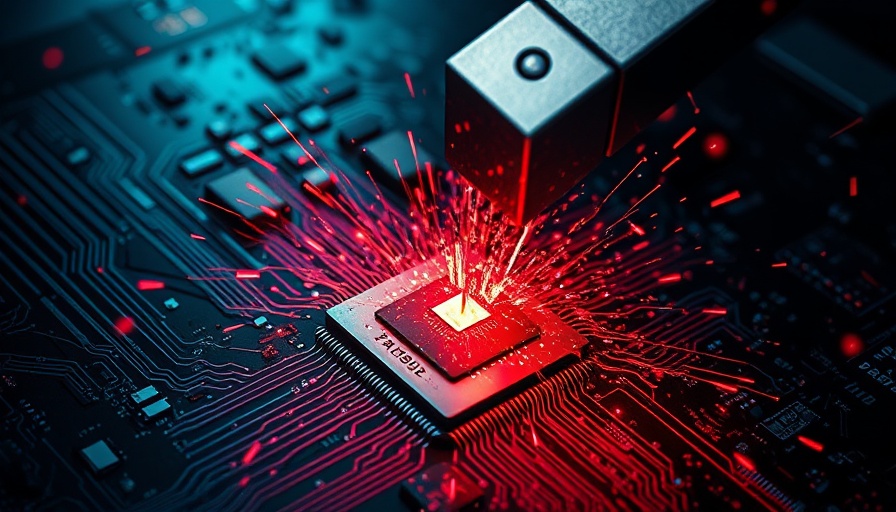
Understanding the GPUHammer Attack in Cyber Security
In the rapidly evolving world of technology, new cyber threats emerge almost daily, making it essential for business leaders and professionals to stay informed. One of the latest threats that has raised concerns is the GPUHammer attack, a variant of the RowHammer vulnerability that primarily targets AI models. Understanding this attack is crucial, particularly as businesses increasingly turn to artificial intelligence for various applications.
What is the RowHammer Attack?
The RowHammer attack exploits a flaw in dynamic random-access memory (DRAM) chips, allowing invaders to manipulate memory cells. GPUHammer specifically focuses on graphics processing units (GPUs), which are vital in training and running AI models. By incrementally flipping bits in adjacent memory rows, attackers can alter critical data without any need for extensive system access.
The Risk to AI Models and Business Data
As AI continues to drive digital transformation across industries, the implications of the GPUHammer attack become even more critical. With the integration of AI tools in business processes, from customer relationship management to big data analytics, securing AI models against such vulnerabilities is paramount. An effective GPUHammer attack could lead to deteriorated model performance or even complete data corruption, affecting business intelligence and strategic decisions.
Immediate Action is Required
Given the potential implications of the GPUHammer attack, businesses must prioritize enhancing their cyber security measures. Implementing a hybrid cloud strategy that includes robust cloud storage solutions can help protect sensitive AI data. Additionally, utilizing tools for machine learning anomaly detection and predictive analytics can proactively identify threats, allowing organizations to act before any damage occurs.
Future Implications for Cyber Security in AI
The ongoing evolution of threats like GPUHammer highlights the need for continuous improvement in cyber security. With AI systems becoming more complex and integrated into everyday operations, understanding and mitigating these risks will be paramount. This necessity also calls for the adoption of advanced technologies like blockchain to bolster security measures, ensuring the integrity of the AI processes and data.
Moving Forward: Becoming the Signal Amidst Noise
For business leaders and professionals, grasping the implications of the GPUHammer attack is just the start. It’s crucial to foster a culture of awareness that emphasizes cyber security within teams. As threats evolve, so must the strategies to combat them, urging the integration of more profound cyber security practices across enterprises while remaining adaptable to new technological landscapes.
In the shadow of such vulnerabilities, businesses and professionals must take proactive steps to ensure their operations are secure. To learn more about improving your market position and becoming the signal within the noisy digital landscape, consider exploring resources and insights at Stratalyst AI.
 Add Row
Add Row  Add
Add 




 Add Row
Add Row  Add
Add 

Write A Comment